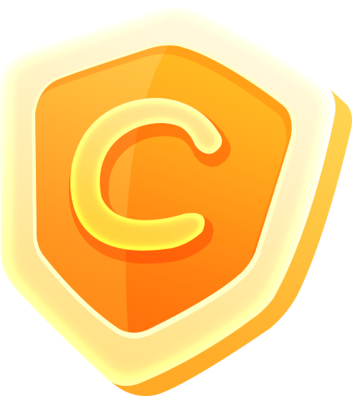报价策略 | 老外分享的询价攻略,我们“见招拆招”
(本文系转载,原创是最爱笑的Sophie。虽是旧文,仍然很有营养)

这是Sophie看到的一篇英文文章,老外之间分享的“如何和中国供应商询价?” 点击量很高!
已附上翻译,以及文后对这篇文章的复盘。(一定要看到最后!)
An importer asked me what he should do when Chinese factories ask for his “price targets”.
一位进口商问我,当中国工厂询问“目标价格”时,他该怎么办。
I think it is a legitimate question from factories (when it comes to trading companies, though, it makes sense to be suspicious).
我认为工厂提出这个问题是合乎情理的(不过,如果指的是贸易公司时,持怀疑态度也是可以理解的)。
Here is the sequence I advise importers to follow, when they source new suppliers:
以下是我建议进口商在寻找新供应商时应遵循的顺序:
-
Get in touch with at least 10 potential suppliers, and ask some questions (about their main market, their size…) to evaluate if they are good fit for your needs.
与至少10家潜在供应商取得联系,询问一些问题(比如关于他们的主要市场,规模……),评估他们是否符合你的需求。
-
Request quotations (FOB, in USD) from them, to get a first pricing (without giving any target).
和他们询价(FOB价格,报美金)然后拿到初步的报价(不要给他们任何目标价格)
-
Be in touch with them briefly on the phone, if possible. Human contact will show them that you didn’t sent that RFQ to 100 suppliers, and they will be more inclined to give a fast response.
如果可能的话,与他们简短地电话联系下。与人通话,显得更加诚意,让他们知道你并没有给100家供应商发过RFQ,他们才会更快速回复你的报价。
-
You will likely see several very similar quotes: that's the "market price". Eliminate all the "outliners" that gave prices 20% higher or lower than the average. (If you are consciously looking to buy above the market price to get above-average quality, keep the highest quotes).
你可能会看到几个非常相似的报价: 这就是“市场价格”。排除所有高于或低于平均水平20%的“异常价格”。 (如果你有意以高于市场价位的价格购买,以获得高于平均水平的质量,那就保留高价的那几家)。
-
If you have a team on the ground and if all candidates are in the same area, this is the best time to visit their factories.
If this is not easy, continue discussing via email and phone, and pay for factroy audits once have narrowed your search down to 1 or 2 candiates.
如果你在中国当地有团队,并且如果所有“候选者”都在同一个地区,那这是参观他们工厂的最佳时机。
如果这样协调起来并不容易的话,那就继续和他们通过电子邮件和电话讨论。一旦你将目标工厂缩小到1或2家,你可以请第三方来验厂。
-
Give more information about your product and your quality requirements to the most interesting candidates.
Don’t hesitate to give them your target price if it is very different from what they offer you. Ask them to justify their price level precisely.
最后向最感兴趣的几个工厂提供更多你的产品信息和你对质量的要求。
如果他们的报价和你的目标价格相差还甚远,这时候不要犹豫,直接给他们你的目标价, 要求他们重新精准地审视他们的价格。
Don’t forget, in China price is very closely tied to quality. 别忘了,在中国,价格和质量息息相关。
If you negotiate a very low price, most suppliers will end up saying yes. Then they will wonder how to make your products.
即便你谈的价格很低,大多数供应商最终都会同意,然后他们会想着如何做你的货。
They will probably use the very cheapest materials and subcontract production in a small workshop. You will get what you pay for.
他们可能会使用最便宜的材料,可能会找小作坊分包生产。一分钱一分货。
One last piece of advice: if you pay 20% above market price, all you risk is wasting 20% of the money you disbursed for your project (and actually it is closer to 10-15% because the FOB price is only a portion of your total landed cost).
最后一条建议: 如果你支付高于市场价20%的价格,你的风险无非就是你为这项目多支付了20%资金 (实际上,没那么多,大概10-15%,因为FOB价格只是你到岸成本的一部分)。
If you pay 20% below market price, you risk getting something that can’t be sold at all (which means you risk losing all your investment).
但如果你以低于市场价20%的价格购买,你就有可能买到根本卖不出去的东西(这意味着你可能竹篮打水一场空)。
Do you agree? 你同意吗?
以下是复盘:
可以看出来,很多谈判,尤其是利益博弈,其实都是心理博弈。只有熟悉有效的博弈规则,才能灵巧地与对方周旋,主动把控谈判的走向。
而最基础的,在谈判时态度坚定一点,硬气一点,也会得到更多的尊重。
1. 当询价方来路不明,但急切要求报价,必须让他提供明确的信息,避免浪费时间。
可以说:Kindly share your company details with us. We need to keep record in our CRM. 麻烦告知你的公司资料,我们需要记录于CRM系统。
只对信息充分,并且愿意交流他背景信息的客户及时报价。如果一个询盘信息过于模糊,对方又是顾左右而言他,那就不能按着他的节奏来报价。通常多半是套价格。
2. 对于一些不厌其烦讨价还价的客户,应该端起架子和他说Currently our factory is working at full capacity. 表示工厂正忙着呢,不缺单子。
也可以说The cost of supplies and operational expenses will not allow us to be able to maintain the quality of our products once we slash the price for you. 一旦我们为你削减了价格,供应和运营费用的成本将不允许我们能够保持我们产品的质量。
(还可以直接运用上面文章倒数第4,第5,第6段去和客户沟通~)毕竟,砍价太狠,只会让一些工厂不得把调整质量,更坏的结果,可能是以次充好,或者偷工减料。
3. 实在谈不拢,可以直接说:You get what you pay for. Choice is yours. 一分钱一分货,你自便。在所有谈判施压方式里,”适当离开“可以终止无休止的杀价。通过这种方式,你可以告诉对方 “如果我们实在谈不拢,那我只好离开谈判桌了”
往往这样,反而会给对方一种错觉,你真的恼火了,或者价格确实已经是地板价了。
这不是诈,当遇到利益博弈时,不能太被对方牵着对方走。
4. 当客户想要免费样板,或者O/A赊账,直接拒绝: It's against our company policy. 这违反了公司的规定。
或者可以说要去请示上司。
接下来再说明: After checking with our supervisor, I got it wrong. FREE SAMPLE is only open for repeat customers. 我和上司确认后,是我搞错了。只有老客户我们才能提供免费样板。
因为谈判中最难把握的就是没有决策权的对手。客户需要请示上级才能拿主意,你也是。对方要说服力,还要说服你的上级,所以压力是双重的。这个时候,只要你当上司的示意当挡箭牌,他也无可奈何。
5. 谈判过程需要适当晾一晾对方的,并且要低一点价格,对方是需要付出一定代价,或者做出一定让步的。比如起订量调高,预付款多一点,余款要及时,接受交期长等,那么低价也是可以商量的。
6.一定要在询价过程多让客户付出,有来有回的邮件或者对话越多,他的沟通成本就越高,这样他很难再以同等的精力和其他人周旋,从而增加粘性。
本文对你有什么启发吗?一起讨论讨论~












